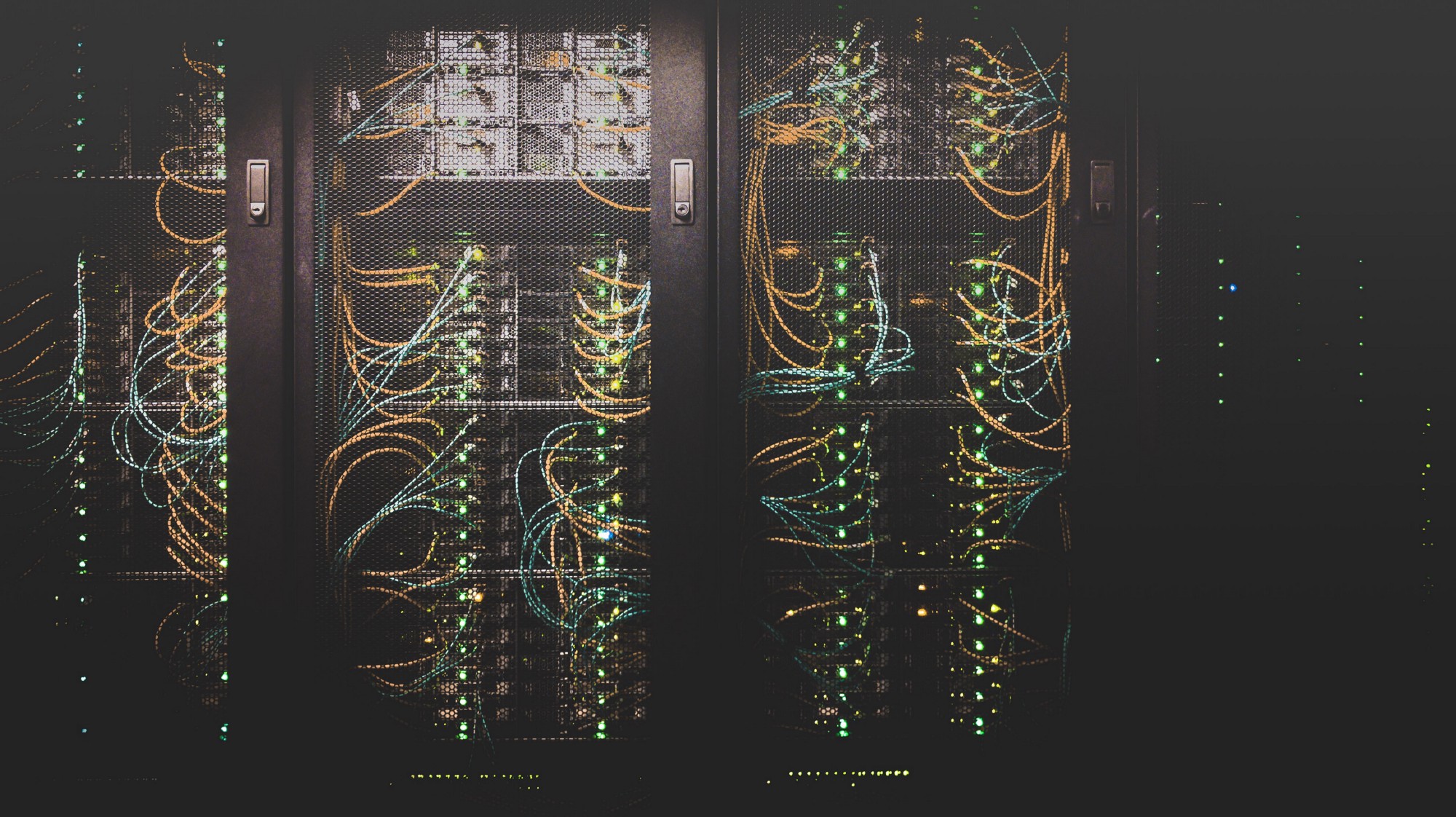What is Tech4Good?
This is part 1 of a 3-part series on Tech4Good. Would love to know what you think — and follow me to get updates about the next installments!
“But [computers] are useless. They can only give you answers.” — Pablo Picasso
Defining ‘Technology for Good’
Technology has certainly transformed the world. We can look back 1,000 years and find significant technological achievements in language, writing, migration, medicine, and more — or even look back only in the last 50 years to find mobile phones, GPS, and the creation of the Internet. The changes have come slowly and evolved with society in some cases, quickly and disruptive in others. But the changes haven’t always been a net positive for the world, and their impact has been anything but equally distributed. Some changes have seen global distributions (the Green Revolution, electricity), and others are limited to those with means (access to the Internet, life-saving vaccines and medicines).
“Technology for Good” (Tech4Good) is the focus of applying technologies explicitly for the greater good. Tech4Good approaches technology and its use within the greater ecosystem — how will it be used, by whom, how will it be sustained, what is being changed explicitly, what are potential second and third order effects of such an intervention.
Tech4Good is about taking a step back from magic bullets, techno-solutionism, and hyped fads to understand the complex ecosystem of people, information, economics, psychology, history, and culture and how technology can be leveraged to make a positive difference.
And then, crucially, it’s acting on that understanding.
Tech4Good has three core themes that are integral to understanding the approach and perspective of leveraging technology for social good.
1. A focus on people
A Tech4Good approach looks at technologies, information, data, and communications through the lens of how it affects *people. *It’s people first — not technology first.
Rather than simply looking at the diffusion of a technology or innovation through its functionality (as we understand it), Tech4Good holds constant person or the end user as the focus. This might seem obvious to many, that people are obviously the important stakeholders here — but is actually in fairly stark contrast to real-world examples that prioritize market solutions, the features of a technology itself, etc. This is not to say that a focus on engineering features, functional specifications, market strategies, government incentives, etc. are necessarily at odds with people-centered approaches — often they are not. But often they can be, and crucially, this can change over time as well, and when you don’t hold *people *constant as the your end goal, the project can shift under our feet without us noticing.
A focus on people first means that the Tech4Good lens is going to be initially skeptical of a given technological innovation or novel approach without understanding it in context. This is particularly true where the focus relies simply on the technology (mobile phone app, data analysis, cloud computing innovation, etc.), as opposed to the social, economic, historical, and individual context of a particular intervention.
This focus on people allows for the inclusion of people and communities that are often left out of technology-related innovation discussions, such as those affected by inaccessibility, the digital divide, connectivity barriers, and restrictive information societies.
A quick note on the ‘Digital Divide’
The gulf between the technology ‘haves’ and ‘have nots’ has is the ‘digital divide.’ It is the social and economic inequality that exists with both access to and use of digital technologies.
It works with almost all markdown flavours (the below blank line matters).
The digital divide is not simply the digital inequality between rich and poor countries. It is a term alluding to the disparities in geography, status, generation, race, and gender.
2. Recognition that technology itself is not progress
“Technology is neither good nor bad; _nor is it neutral.” — Melvin Kranzberg
One central theme of Tech4Good is that technology itself is not always a net positive — that the advent or implementation of a technology should not be counted as the same as “progress”. In fact, we often see examples where technology can be used to further inequality, to put privacy and safety at risk, to require significant resource investment in the first place, and many others.
Tech4Good forces us to dig into the weeds and understand the relationship between intervention and impact. So often we are focused on the positive *impact *of a technology — how it changes someone’s life, how it can influence macro measurements such as a nation’s GDP or progress on the Sustainable Development Goals (SDG) — that we can overlook the technology itself.
We see the harvested food but not the tractor, the healthy child but not the medication, the acceptance to university but not the hours spent reviewing flashcards on a mobile phone months before a critical exam that helped get them there.
If we peg our measures of success to outcomes focused on people, then we don’t risk focusing on just the roll out of a technological innovation (often very easy to track, and very easy to feel successful if we just look at these numbers). As a result, the technology component fades into the background as a means to an important and critical end.
3. Addressing technology as a ‘Wicked Problem’
For every complex problem there is an answer that is clear, simple, and wrong.” — H.L. Mencken
A “wicked problem” is a problem that is difficult or impossible to solve because of incomplete, contradictory, and changing requirements that are often difficult to recognize, and due to complex interdependencies, the effort to solve one aspect of a wicked problem may reveal or create other problems. In other words, a problem whose social complexity means that it has no determinable solution or stopping point.
Tech4Good problems are often considered “wicked” in this sense because it recognizes that the technology is placed in a context of people, culture, and society. It’s not as simple as downloading an app, demonstrating a new cookstove, or building a website.
Those “simple” problems have been solved, and the Tech4Good challenges are the ones where we need to tweak both the available tools alongside the understanding of their use; we need to consider historical activities alongside cultural considerations of device usage; we need to consider that solving any one particular part of a problem is a recipe for creating new problems which we couldn’t have anticipated.
The Tech4Good lens motivates us to look beyond the small scope of the technology itself and place it within an appropriate context.

A Quick History of Tech4Good
There are many projects, activities, initiatives, and interventions that fall under the term “Tech4Good” — and many (but perhaps not all) well deserved. From making websites more accessible to those with disabilities, to providing critical government services through both smartphones and low-cost feature phones, to using maps to communicate information about local health clinics and their various capacities, all of these would fall under the category of “tech4good.” Despite the broad category of Tech4Good as an area of practice and academic study, there is more or less a consistent through-line in recent history that is helpful in understanding how best to make use of Tech4Good.
The Tech4good story really starts in the 1990s, we begin to see examples of cybercafes and telecenters, digitization of maps and public resources, and funding for explicitly technology-focused interventions from donor and foreign aid organizations. Prior to this, there were certainly no shortage of examples of using ‘technology for social good’ — public computing in libraries, for example, or rural electrification projects. But it wasn’t until that time that we start to see a “Tech4Good” landscape that had the qualities we see now, with its explicit focus on people and doing proactive social and economic good, as not seeing technology as a magical solutions, and seeing tech interventions as part of a broader, complex ecosystem.
In the 2000s, with the growth of telecenters and the Internet and mobile phone networks and low-cost handset proliferation around the world, it came to greater prominence as both an academic discipline as well as an area of practice. This was bolstered by policymakers recognizing the value of technology as a tool in global economic development through frameworks like the Millennium Development Goals.
In academia, there were movements within the social computing, science and technology, and information science disciplines to address a new discipline of “Information and Communication Technologies for Development”, or ICT4D. This multi-disciplinary area expanded and began to also draw from the disciplines of international development, economics, data science, and communications.
It was an area of study that grew as ICTs were having an impact on patterns of communication, workforce opportunities, and economic conditions. More importantly, it was a key leveraging point for many organizations, governments, community groups, and individuals, as there was an assumption that computing and mobile technologies had the potential to address education, agriculture, government services, and more.
A quick note on One Laptop Per Child (OLPC)
Perhaps the best known of the Tech4Good interventions is the One Laptop Per Child project, or OLPC. OLPC was the brainchild of the MIT Media Lab — the effort spearheaded by Nicholas Negroponte. The idea was to construct a $100 laptop that could be largely “self-sufficient” (i.e. hand crank for battery power, no training necessary, useful software pre-installed and immediately accessible by children of all age) and distributed en masse to areas with challenging education environments, such as South America and Sub-Saharan Africa.
The initiative saw a number of challenges — from costs that never made the $100 price tag feasible, to low order numbers from governments, to hardware and software problems on a number of fronts. The OLPC initiative was not rolled out with corresponding attention to education systems, teacher workforces, product sustainability, overall resource costs to manage such an intervention, and more. There is some anecdotal evidence that OLPC pushed laptop manufacturers towards the “Netbook” form factor for small, low-cost laptop computers.
However, OLPC’s focus on the device and not the downstream market demand or education ecosystem overall has led OLPC often being referenced as a case study of what not to do in Tech4Good.

IT, ICT, ICT4D, and Digital Development
There can be a confusing amount of terms relating to technology, social development, international humanitarian work, etc.
Tech4Good refers to the multidisciplinary discipline and practitioner perspective that focuses on leveraging technology for people, and is also sometimes referred to as ICT4D (Information and Communication Technologies *for *Development.)
ICT is an umbrella term that encompasses all sorts of uses of technology, including ‘IT’, what we think of as the more strictly defined area of computing systems, data, and computer hardware.
Tech4Good is one of the more common terms for this area now, though you’ll often see “Digital Development” referring to the same ecosystem of technologies, organizations, and initiatives. These terms may change as well, adapting with time to reflect updated approaches, inclusiveness, and impact.
I prefer the term “Tech4Good” over “Digital Development” or “ICT4D” simply because it’s a little easier for everyone to understand the terms without needing to know the academic history or how “digital” is being defined.

Tech4Good Today
“Technology is nothing. What’s important is that you have a faith in people, that they’re basically good and smart, and if you give them tools, they’ll do wonderful things with them.” — Steve Jobs
Tech4Good’s umbrella of leveraging technology for the explicit purpose of enabling social & economic good has only grown in recent years, as both a recognition of technology’s powerful impact on so many parts of our lives continues to expand, and also as it becomes clear that without that explicit focus on “tech for good” we often see technology used as a tool for exploitation and exacerbation of a digital divide.
We are seeing more organizations now with social good and/or philanthropic missions, and the circle continues to widen. Many organizations have popped up with a focus on applying tech4good to the fields of machine learning and AI, to drones and remote imaging, to digital privacy and security, and more.
On the international side, the Millennium Development Goals, and now the Sustainable Development Goals (SDGs) have been a good boost for bringing the use of technology to the forefront of conversations, as the role of mobile phones, access to digital services, and connectivity play a part in nearly all of the human development goals outlined by the SDGs.

Tech4Good Tomorrow
“Once a new technology rolls over you, if you’re not part of the steamroller, you’re part of the road.” — Stewart Brand
As I write this in the spring of 2020, it’s clear that we’ll need strong Tech4Good lenses, methodologies, and organizations for a changing world — particularly a world now mediated more and more by digital communications.
The trend seems to be both a continued growth of an awareness and distinct use of the tech4good ecosystem — through academic institutions, nonprofit and international NGOs, private business, and national governments.
The challenge will be to continue to ensure that we are learning the lessons of tech4good’s histories and that we aren’t simply caught up by the latest fad or enthusiasm for a silver bullet that will solve all of society’s challenges.
The successful tech4good initiatives will not be developed in laboratories or conference rooms. They will be designed together with the communities and individuals where they can do the most good, and at the end of the day, it will rightfully be the people given the credit — not the technology.
